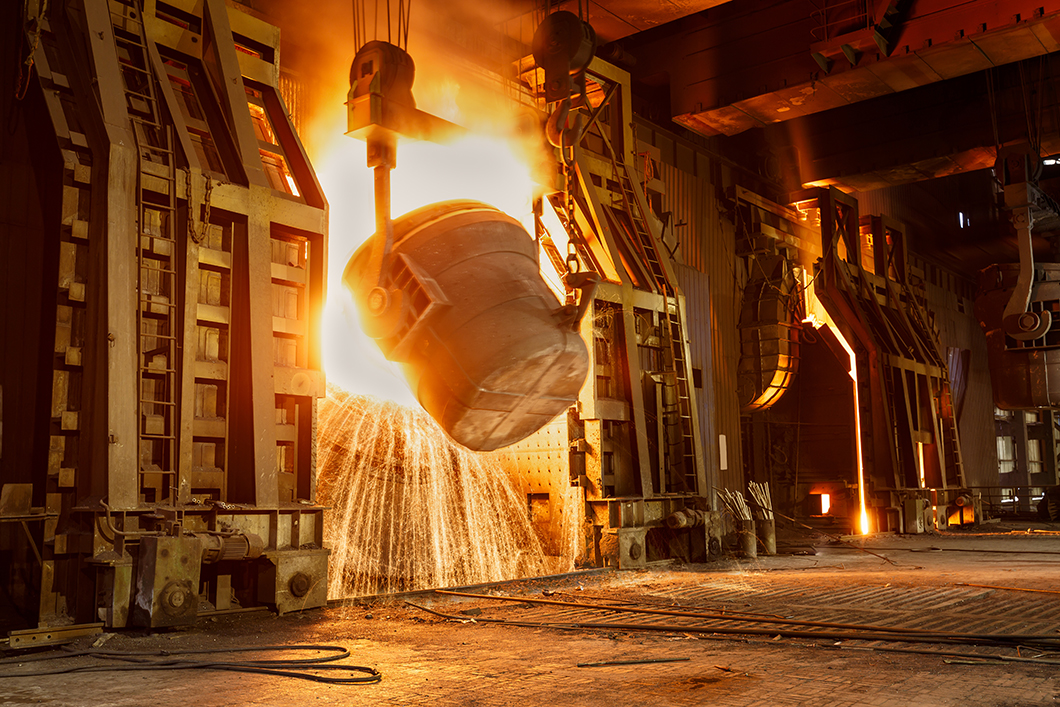
Double advantage: crude iron is recovered and a climate-friendly binder is produced at the same time.
Source: istock/zhaojiankang
Large quantities of crude iron can be recovered during steel production and at the same time a CO2-saving binder can be produced for the cement industry. The Bundesanstalt für Materialforschung und -prüfung (BAM) is currently optimising the process to bring it quickly into use.
Steel production in Germany produces over 5 million tonnes of slag every year - a valuable resource containing about 30 per cent iron oxide. Most of the steelmaking slag is used in asphalt and concrete for road construction, in hydraulic engineering for canals or ballast for railroad beds. This implies that the bound iron is not used according to its material potential and is lost for recycling.
A project now starting at the Bundesanstalt für Materialforschung und -prüfung (BAM) aims at a zero-waste concept, i.e. recycling the slag as completely as possible. "We want to reduce the iron oxide from the slag to metallic iron and return it to steel production," explains Christian Adam, head of the project and an expert in circular economy at BAM. "This way, 600,000 tonnes of crude iron could be recovered every year in Germany alone, replacing 900,000 tonnes of iron ore that would otherwise have to be imported."
BAM has already been able to demonstrate that the process works from a technical point of view. Furthermore, the process even has a second major benefit: During the iron reduction process, a high-quality mineral binder is produced as a by-product. This binder could be used in the cement industry instead of conventional Portland cement clinker. Portland cement clinker is produced from primary raw materials that have to be mined and processed with a high energy input and corresponding CO2 emissions. The cement industry is one of the world's largest emitters of this greenhouse gas, accounting for eight percent of total CO2 emissions. The new binder could therefore help to save many tonnes of harmful greenhouse gas and at the same time reduce the raw material demand of cement production.
The technical challenge: The process requires temperatures of over 1,800 degrees Celsius. Up to now, however, slag in steelworks is tapped at only 1,600 degrees. It would therefore require a lot of energy to reach the higher operating temperature. Therefore, the process with the double benefit is neither technically feasible nor economical on an industrial scale today.
"This is where our new project comes in" explains Christian Adam. "We want to adapt the process in such a way that it can be realised on a large scale - and is profitable. We will modify the composition of the slag in a way that iron recovery can be carried out at lower temperatures and thereby significantly reduce the effort of the process. At the same time, the positive properties of the reduced slag, which later give the cement strength, should be retained."
Practical relevance and marketability are crucial here: ArcelorMittal Eisenhüttenstadt, a steel manufacturer, and two cement manufacturers, Cemex Deutschland AG and Spenner GmbH & Co. KG, participate in the project.
Based on the project results, ArcelorMittal Eisenhüttenstadt will plan a large-scale demonstrator with which the process can be tested and integrated in a steel mill. The cement manufacturers will evaluate the performance of the binder; finally, Öko-Institut e.V. will evaluate in a life cycle assessment the ecological advantages resulting from the application of the process for both the steel and the cement industry.
BAM has a focus on recycling management and over 20 years of experience in the field of post-treatment of slags.
The project is supported by the Federal Ministry of Education and Research within the framework of the funding measure "Resource-efficient circular economy".


